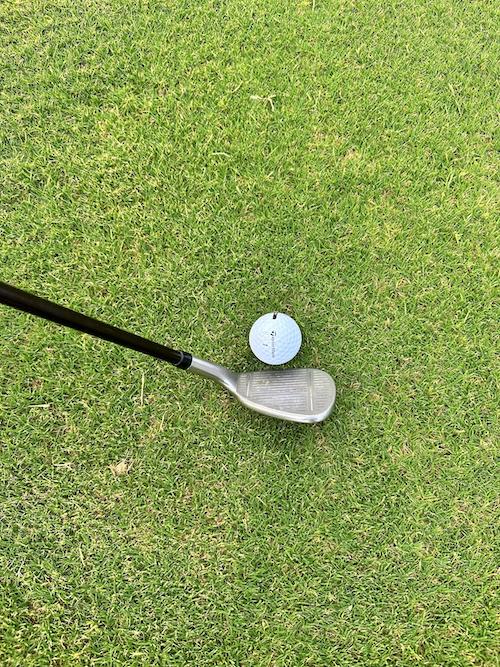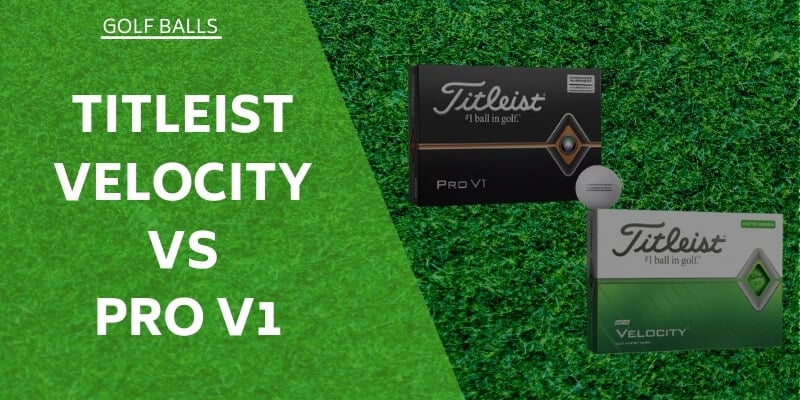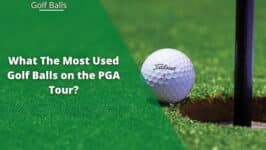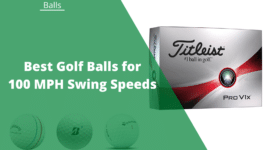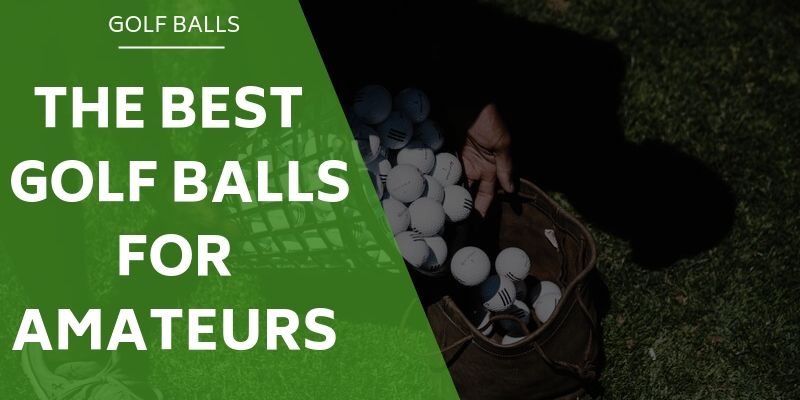- Soft golf balls have excellent feel and control and are the perfect choice for beginners or golfers with a lower swing speed.
- Hard golf balls have good distance and speed and are the perfect choice for more skilled golfers or those with higher swing speeds.
I’ve taught golf for decades and here’s how I’d explain the details of soft vs hard golf balls to my students.
| Factors | Soft Golf Balls | Hard Golf Balls |
| Ideal User | Novice golfers, players with lower swing speeds | Experienced golfers, players with higher swing speeds |
| Key Benefit | Enhanced feel and control | Maximum distance and speed |
| Compression | Higher compression; compresses more efficiently with lower swings | Lower compression; withstands higher swings |
| Distance | Offers sufficient distance for lower swing speeds | Provides maximum distance for faster swings |
| Spin | Higher spin; helps nail tricky shots around the green | Lower spin; to help control long shots with the driver and other long clubs |
| Control | Improved control, suitable for strategic gameplay | Control can be more challenging and requires technique and experience |
| Experience | A sensation of controlled power when coming off the clubface | Shots tend to fly farther and straighter |
| Suitability for Gameplay | Adds a new dimension to the golf game through spin | Offers impressive distance, which can benefit gameplay |
Soft Golf Ball vs Hard: Pros and Cons
Let’s break it down and look at the pros and cons of soft and hard golf balls:
Soft Golf Balls

Pros:
- Enhanced Feel: Soft golf balls provide a superior feel, giving me a heightened sense of control. They are, in a way, more ‘communicative,’ relaying feedback from each shot.
- Better Spin Control: Soft balls tend to offer more spin, which can be a great advantage, especially around the greens. It allows for precision shots and the ability to shape the ball’s flight more effectively.
- Suitable for Slow Swing Speeds: Soft balls can be a great asset for golfers like me, who have a slower swing speed in my early days. Their low compression rate allows for effective launch even at slower speeds, optimizing the distance.
Cons:
- Limited Distance: One trade-off with soft balls is that they may not travel as far as hard balls. During my tests, hard balls consistently outperformed soft ones regarding raw distance.
- Durability: Due to their softer cover, soft balls tend to be less durable than hard balls. They might also not withstand aggressive hits or harsh course conditions.
Hard Golf Balls

Pros:
- Increased Distance: For golfers with faster swing speeds, hard balls can deliver impressive distance thanks to their high compression rate. They are built to absorb and transfer the power of a strong swing into maximum distance.
- Durability: In my experience, hard balls tend to be more durable. They effectively withstand high-impact hits and harsh course conditions.
- Better for High Swing Speeds: Hard balls suit golfers with fast swing speeds. They are designed to handle the power of a stronger swing and optimize it for distance.
Cons:
- Reduced Spin Control: Hard balls’ lower spin rate is one potential drawback. This can affect control, particularly in your short game.
- Limited Feel: Hard balls may not offer the same level of ‘feel’ or feedback as soft balls. At times, some golfers, including me, find them less responsive and harder to control.
Testing the Hard and Soft Golf Balls
I put on my testing hat and hit some soft and hard balls to keep this analysis objective and practical. I tried them with different clubs, aiming for different shots to understand their behavior under varying conditions.
Distance Shots — Using Driver
First, I started with distance shots using my trusted driver. With a full swing behind me, the hard golf balls rocketed off the tee with a noticeably sharp impact sound. Seeing how the higher compression translated into a longer flight was fascinating.
The balls almost cut through the wind, proving why hard golf balls are often associated with greater distance. On average, I found that the hard balls outdistanced the soft ones by around 10 yards.
The story was a bit different when I switched to the soft balls. The feel upon impact was significantly gentler, almost like hitting through butter. Though they didn’t quite match the hard balls in the distance, they offered something else – a heightened sense of control. With each swing, I connected with the ball, and it seemed easier to shape my shots, be it a draw or a fade.
Approach Shots — Using Iron
Next, I moved on to the approach shots using my irons. The lower spin rate was evident with hard balls as they tended to roll further on landing. While this could be advantageous on certain courses or for specific play styles, it didn’t afford me the precision that the soft balls did.
When using soft balls, the results were impressive. Each time I hit a soft ball with an iron, it was as if it had an inbuilt braking system. The higher spin rate meant they stopped quickly, offering me greater accuracy and control – crucial for nailing those approach shots.
Short Game — Using Wedge
The distinction between the two was even more pronounced in the short game, where I used wedges. In the realm of chipping and putting, the soft balls truly excelled.
The soft balls elevated spin and softer feel offered exceptional control around the greens. They conveyed feedback directly via the club, indicating precisely the quality of the shot.
Contrastingly, the hard balls felt slightly difficult to handle. They missed the delicate touch offered by the soft balls, often rolling farther than anticipated. While the hard balls weren’t entirely disadvantageous – they maintained their line well on extended putts – my preference was the soft balls for their finesse in short games using wedges.
Read more: The Best Cheap Golf Balls
Who Should Use Soft Golf Balls?

There’s no better way to illustrate who should use soft golf balls than to share my personal experience. When I first got my hands on a soft golf ball, I was a novice golfer with a swing speed that wasn’t breaking any records.
I first noticed how great the soft ball felt coming off the clubface. It wasn’t harsh or abrupt; it was a sensation of controlled power. That’s one of the key reasons why beginners and low-swing speed players may favor soft golf balls – the enhanced feel.
Soft golf balls offer genuinely noticeable added control and distance to beginners and those with a lower swing speed. These balls compress more efficiently, meaning you can squeeze every ounce of distance out of your swing, even if it isn’t the fastest. They also gave me extra spin, helping me nail those tricky shots around the green.
As I experimented with these soft balls during my golfing journey, I realized the value they bring to strategic gameplay. The additional spin allowed me to shape my shots better, adding a new dimension to my golf game. And I’m not alone; many pros prefer soft balls for their superior control and feel.
Read more: The Best Golf Balls for High Handicappers
Who Should Use Hard Golf Balls?

I started experimenting with hard golf balls as I grew more comfortable on the golf course and increased swing speed. I soon found that these were a whole new beast. If soft golf balls are about feeling and control, hard golf balls are about distance and speed.
So, hard golf balls are the way to go if you’re someone with a higher swing speed or an experienced golfer looking to maximize your distance. They’re built to withstand the power of a strong swing and transfer that power into the maximum distance. My shots started to fly farther and straighter with hard balls, which was fantastic. In case you are looking for the straightest flying golf balls, we also have a list for that.
There’s a trade-off, of course. The higher compression of hard golf balls means they give less backspin. So, while you’ll be booming it off the tee, you might struggle a bit more with control on your approach shots and around the greens. But with experience and technique, I learned to mitigate this.
Overall, both soft and hard golf balls have unique advantages. They cater to different types of players and different aspects of the game. Ultimately, the choice between the two boils down to your preferences, skill level, and the specific demands of your golf game.
Read more: The Best Golf Balls for Distance
Soft Golf Balls vs Hard: Understanding Basics
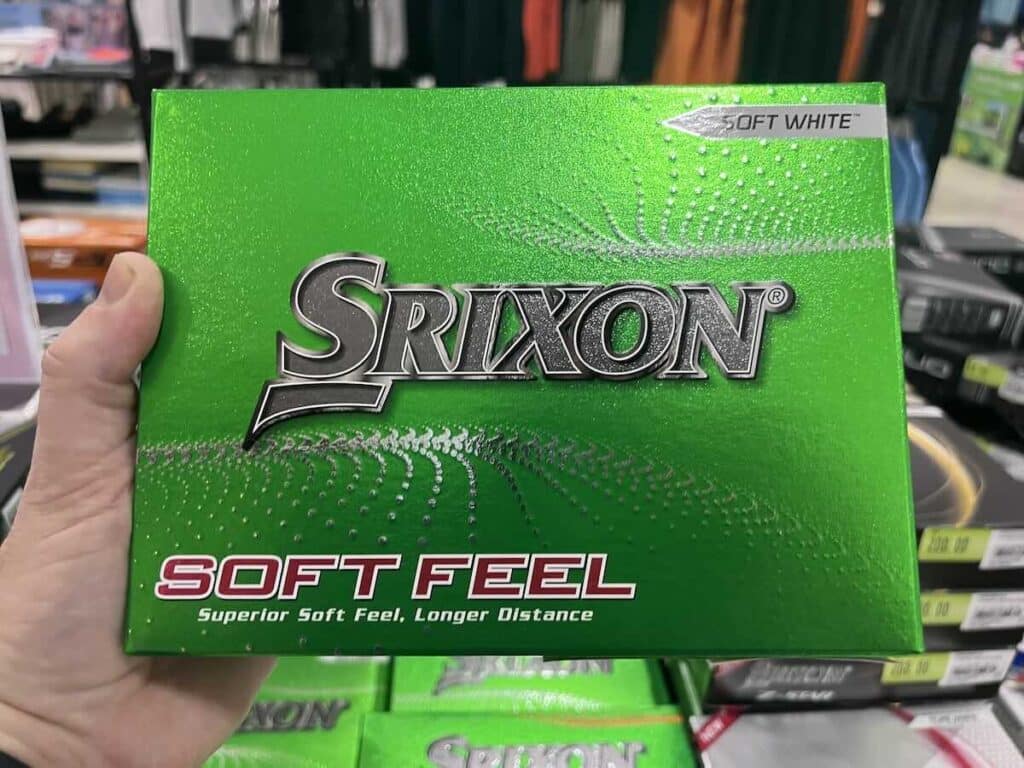
When I first got my hands on a soft golf ball, I was a novice golfer with a swing speed that wasn’t breaking any records.
I first noticed how great the soft ball felt coming off the clubface. It wasn’t harsh or abrupt; it was a sensation of controlled power. That’s one of the key reasons why beginners and low-swing speed players may favor soft golf balls – the enhanced feel.
Clint McCormick, Class A PGA-Professional and Degree in Golf Management
Before answering the question, “Are soft golf balls better?”, it’s essential to understand the history of soft golf balls. The first golf balls were made from hardwood in the 14th century. By the 17th century, ‘featheries’—leather pouches filled with goose feathers—took the stage.
The 19th-century introduction of the Gutta-percha ball marked the first ‘hard’ ball in golf history, establishing a clear difference between soft and hard golf balls. This evolution continued until today when we see a wide range of sophisticated balls on golf courses.
Whether it’s a soft or hard golf ball, each is an engineering marvel of an inner core, a mid-layer, and an outer cover. The compression rate of the core primarily determines its hardness.
Typically, soft golf balls have a lower compression rate and are softer to the touch, as the term suggests.
But what does a soft golf ball mean for the golfer and the game? The debate truly ignites when discussing how this hardness influences ball performance. Some golfers firmly believe in the enhanced control and feedback provided by soft balls, while others are unwavering on the distance offered by hard balls.
For example, during a conversation with a local golf pro, he revealed his preference for soft balls, believing they deliver better spin control, particularly around the greens. But are soft golf balls better for beginners? That depends.
Golf is a game of diversity and personal preference. What is beneficial for one player might not be for another. For instance, golfing legend Jack Nicklaus often favored harder balls, asserting they provided better distance control for his powerful drive.
Read more: The Best Golf Balls on the Market
FAQs
Do Soft Golf Balls Go Further?
No, not exactly. Softer balls often go further, but only for players with slow swings because they can more effectively compress the ball. However, hard golf balls can provide more distance for players with faster swing speeds, as they can withstand high-impact hits better.
So if you’re in the market for distance, hard balls are the way to go.
Do Pros Use Soft Golf Balls?
Many professional golfers do prefer soft balls for the feel and control they provide. But it's not a one-size-fits-all; the choice of ball greatly depends on an individual's playing style, the course they're playing on, and the weather conditions.
The rule of thumb is to go for softer ones if you need spin and accuracy.
Can A Golf Ball Be Both Hard And Soft?
Yes, a golf ball can be both hard and soft due to its multilayer design. The inner core might be soft for better compression, while the outer layer could be hard for durability and spin control. The choice of hard or soft refers to the feel at impact.
Clint is PGA-certified and was a Head Teaching Professional at one of Toronto's busiest golf academies. He was also featured on Canada's National Golf TV program, "Score Golf Canada," twice. He graduated with a degree in Golf Management from the College of the Desert in California and studied under Callaway's co-founder, Tony Manzoni. He has a handicap index of 6.2 and spends the winters near Oaxaca, Mexico, where he plays twice a month at the Club de Golf Vista Hermosa. He's written over 100 articles at GolfSpan since 2021. You can connect with Clint at LinkedIn, FB, his website, or Clintcpga@gmail.com.
